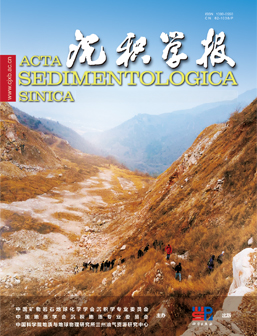Selective Dissolution of Non-freshwater Origin and Its Differential Distribution within Sedimentary Cycles: A Case Study From the Buqu Formation of GK-1 Well, Qiangtang Basin
doi: 10.14027/j.issn.1000-0550.2023.142
- Received Date: 2023-11-01
- Available Online: 2024-01-09
-
Key words:
- south Qiangtang basin /
- Buqu Foamation /
- marine carbonate rocks /
- selective dissolution
Abstract: [Objective] Selective dissolution is common in marine carbonates, and its origin is typically to be related to meteoric fluids, while other possible origins lack further discussion. [Methods] In this study, the origin of marine selective dissolution of Buqu Formation of well GK-1 in the south Qiangtang basin is investigated based on petrography, stable carbon and oxygen isotopes, and elemental geochemistry. [Results] Eight sedimentary cycles (C1 to C8 from bottom to top) were recognized from the studied Buqu Formation, each cycle with limestone in the lower part and dolostone in the upper part. These eight cycles can be divided into two types (A and B) according to different carbonate components. The limestone in type A cycle (C1-C4) is dominated by bioclastic packstone and grainstone, while in type B cycle (C5-C8) is dominated by bioclastic wackstone and packstone. Upwards from type A cycle to the type B cycle, the content of aragonite fossils (gastropods and bivalves) in the limestone decreases and the content of peloids increases. The dolomite in both type A and type B cycles is crystalline dolomite with ooid ghosts showing selective dissolution pores. Importantly, the overall percentage of selective dissolution pores in type A cycles is significantly higher than that in type B cycles. In terms of geochemistry, the carbon and oxygen isotopes of dolostone are relatively higher compared to those of limestone in each cycle. Rare earth elements and yttrium concentrations (0.44~7.25 ppm) of dolostone and limestone are extremely low and the Y/Ho ratios (35.63~75.55) are basically within the range of modern seawater. Dolostone exhibits a seawater-like PAAS-normalized REE+ Y pattern, showing a left leaning style with relatively LREE depletion and HREE enrichment, while PAAS-normalized REE+ Y pattern of limestone is relatively flat; δCe values of dolostone range from 0.55 to 0.78 (average 0.63) and δCe value of limestoe range from 0.80 to 0.88 (average 0.84); The concentrations of redox sensitive elements (U, Mo, V) are very low, and the V/V+Ni ratios range from 0.04 to 0.45. In each cycle, both Cu and Zn content in dolostone is higher than limestone, and type A cycles overall have higher Cu and Zn contents than type B cycles. [Conclusions] Based on lithology and sedimentary components, the Buqu Formation of GK-1 Well was likely deposited in shallow marine grain-shoal settings, with sea water becoming restricted from type A cycles to type B cycles. Based on the comprehensive petrological and geochemical analysis, selective dissolution herein is interpreted to be produced by early marine diagenesis rather than meteoric diagenesis or deep burial. During early marine diagenesis, aragonite may be selectively dissolved by undersaturated pore fluids via organic matter decomposition. In the sedimentary cycles, the differential development of selective dissolution is probably controlled by aragonite content, paleoproductivity, and early marine diagenetic redox boundary: i) in a single cycle, dolostone interval is characterized by higher paleoproductivity and more oxic pore water than limestone interval during early diagenesis, favoring the production of undersaturated fluids and the formation of selective dissolution pores; ii) in comparison between type A and type B cycles, type A cycles have higher content of aragonite, higher paleoproductivity and lower early marine diagenetic redox boundary, therefore resulting in a better development of selective dissolution.
| Citation: | Selective Dissolution of Non-freshwater Origin and Its Differential Distribution within Sedimentary Cycles: A Case Study From the Buqu Formation of GK-1 Well, Qiangtang Basin[J]. Acta Sedimentologica Sinica. doi: 10.14027/j.issn.1000-0550.2023.142 |






 DownLoad:
DownLoad: